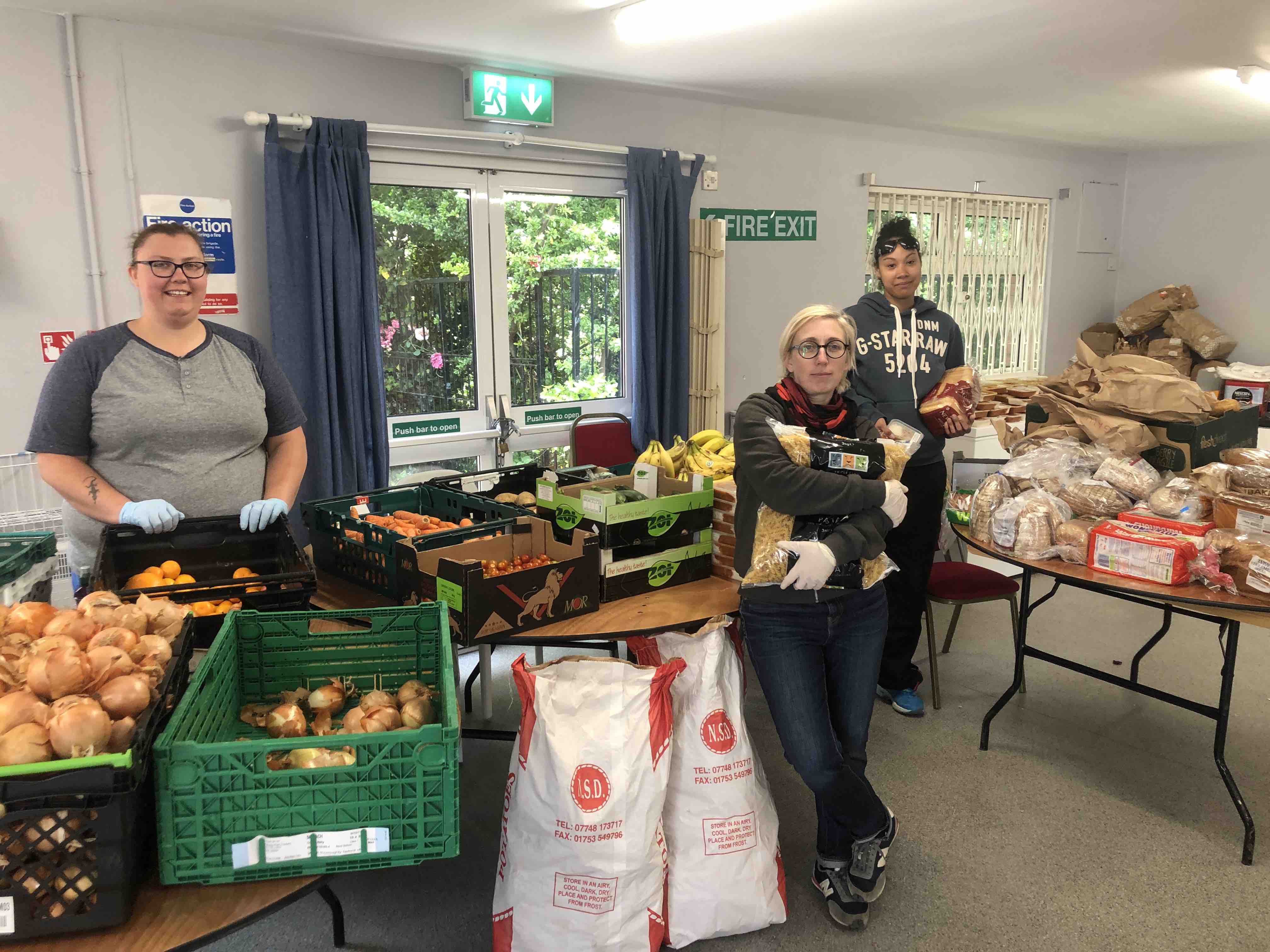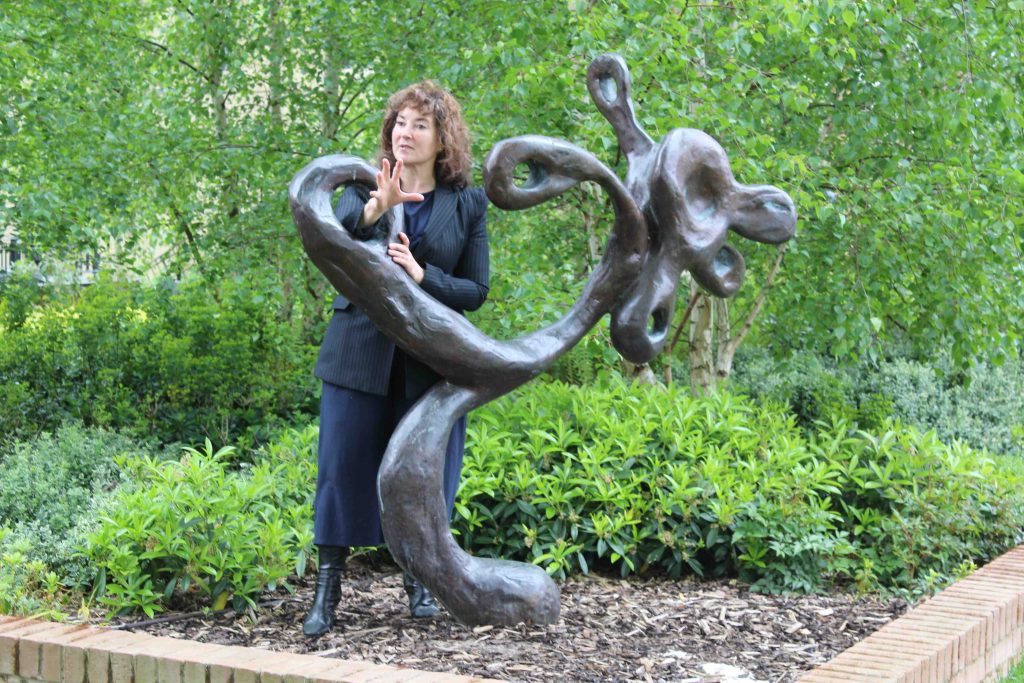Gentrification leaves artists ‘priced out of London'
Call for co-ops to help low-paid creative workers
Monday, 15th April — By Dan Carrier

Shiri Shalmy from Cooperation Town, centre
A FUNCTIONING tenant movement willing to stand up to a “government of landlords” is needed to launch a fightback against a broken housing system that routinely pushes creative people out of Camden, campaigners warned this week.
Shiri Shalmy – who runs Cooperation Town in Gospel Oak and is fundraising to expand a housing cooperative – said arts sector workers had helped create Camden only to be “dispossessed” of communities they had helped to build by “gentrifiers”.
The loss of so many residents in artistic professions – people not simply looking to work to pay the rent – created a “sterile and functional environment for the rich to exercise their property rights” and a loss of collective spirit, she said.
Ms Shalmy, who lives in Tufnell Park, said: “There is a lot to say for how artist and cultural workers created Camden. It became all nice and hip for gentrifiers, who dispossessed us. With our bodies and our labour, we helped make Camden exciting and attractive – and then we got priced out.
“I used to live in Malden Road in Gospel Oak, but I can’t afford to rent there now. In the end I was left homeless.
“When I worked in the arts sector I was a curator and my entire income was from Arts Council grants. Almost all of that income went into the hands of landlords. Most people in the fine arts are surviving with public grants funding wages that bought private landlords new homes.”
She said the system was perpetuated by politicians who owned homes and “think it is all working fine”, adding: “It is working fine for them, because we let them. Join a tenants’ union, organise with your neighbours. We need to build up communities, so when they come to demolish our estates we are already organised. We need to get back those church halls, community centres.”
Ms Shalmy said: “The answer is in housing. Increasing the number of council houses. Some of it is in imposing rent caps and prosecuting rogue landlords. Some of it is by ensuring that there is funding to support alternatives. We need more housing co-ops that are controlled by the people who live there.
“The dream is to have land with no landlords, work places with no bosses.
” In housing co-ops, no individual can own or sell a home, and rents are kept at a minimum for the life of every tenancy. Several were started in the mid-1970s when government grants and repayable loans were available to groups willing to start up cooperative housing projects.
In the absence of a government with any visionary housing policies, Ms Shalmy said she was trying to raise funds to buy a property to expand an existing small housing co-op.
She said: “We are issuing loan stock that means that members of the public can lend us money and get it back in five or 10 years [through the rents]. We are reaching out to people for donations as well and we are doing events.”

Isabel Langtry with one of her stunning sculptures
At the Hampstead School of Art, principal Isabel Langtry said one of her biggest concerns was for staff who often “lived in low-quality multiple occupancy properties”.
She said: “Camden has been a historical cultural driver for hundreds of years. Artists like Barbara Hepworth could afford to rent here. So did Mondrian, and Walter Gropius wanted to open a Bauhaus school of art here. It was the home of Modernist architects in the 1930s, poets and writers of all sorts who could afford to live here.
“One of my biggest concerns as principal of the Hampstead School of Art is for my teaching staff, so many of whom are no longer able to afford the rents here, and often live in expensive low-quality multiple occupancy properties.
“Being a cultural driver enriches our area in so many ways, brings wealth, ideas, creativity. We need to hang on to our local artists. Not having these cultural drivers in our midst is an enormous loss. Let’s make affordable good quality housing a part of what we achieve in Camden in the short-term future a critical objective.”
‘It’s short- sighted to not value artists’
By SAM TAYLOR-JOHNSON, GUEST EDITOR
“WE need more community asset protections for venues and galleries – it’s a great idea in principle. It is so important to protect places for people to come together. Coming out of art school with no money, I worked on the door at the Camden Palace.
“I was the girl saying your names are not down, you can’t come in. Then they made me the manager, which is a whole other story. “I used to work there at nights to support myself as an artist in the day and it brought me to my knees.

Film director Sam Taylor-Johnson is our special guest editor this week
“We used to look for freezing cold, semi-derelict spaces to use to create art.
“A few of us would find empty buildings and invite people in there to work as artists, to put on exhibitions and put these spaces back together. We’d find unused buildings. As an artist, it was the only way we could work and survive.
“As places come up in the world, these opportunities for working and affordable homes become less and less. Subsidised art spaces would be a incredible start. It would build an artistic community in an area and the rewards would be wide-ranging.
“It is so short-sighted not to recognise the value of artists’ work in a community and look at ways to support that.”
